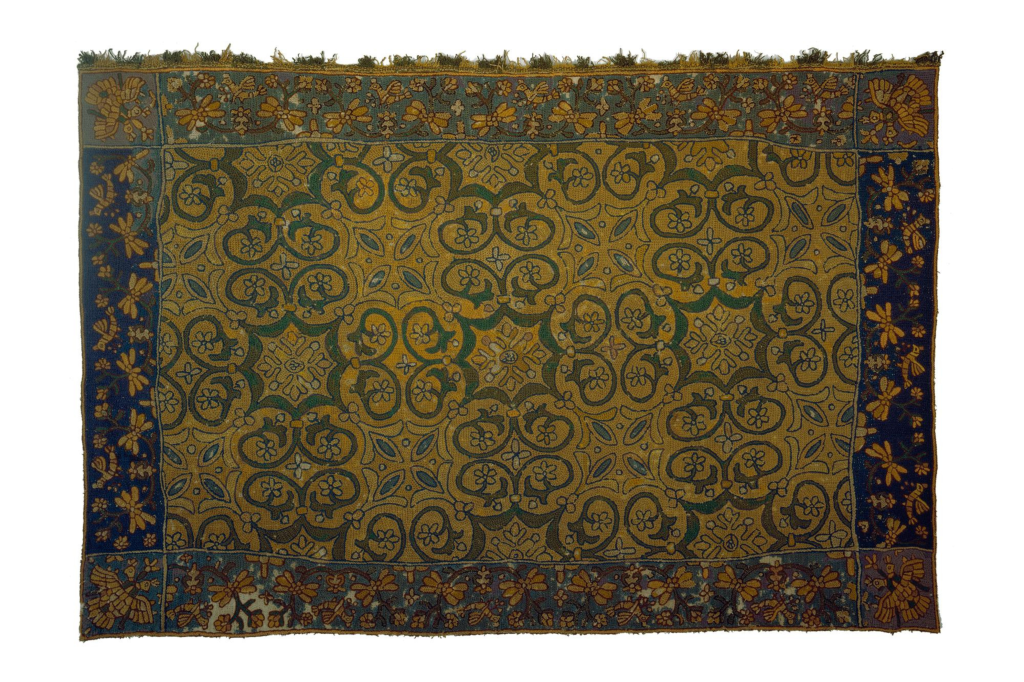
Attributed to the 17th century, this carpet is considered one of the oldest that have survived to this day.
It has the particularity of presenting the embroidery stitch executed in several directions following the movement of the design, and the decorative motifs outlined in flower stitch foot.
The decoration on the field and the border is markedly different. In the field, the vegetal scrolls stand out; in the border, we see a sequence of flowers and birds, and, in the corners, two-headed eagles.
The technique of the carpets we call “de Arraiolos” consists of embroidery executed with sheep’s wool on a canvas of tow (the coarsest part of linen) or jute. The stitch is cross-stitched, one of the loops being longer.
For a long time, natural dyes were used with wools: red was obtained from Brazil wood and spurge; blue from indigo and yellow from lily-of-the-valley.
Why Arraiolos? Some researchers argue that it was due to the Muslims’ expulsion from Lisbon, in 1498, with the community consequently settling in that Alentejo town. Arraiolos carpet is the result of oriental decorative taste blending with Western embroidery technique.
